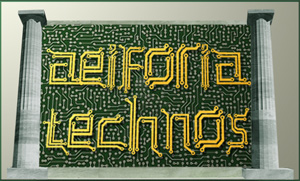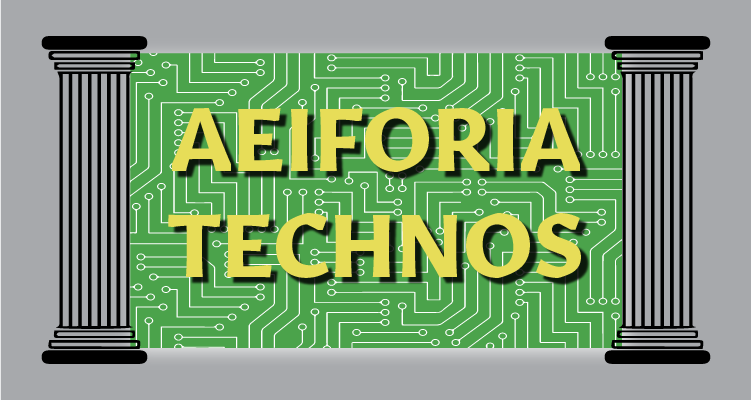One Touch of Nature Makes the Whole World Kind – Part II
In my last installment, I scratched th e surface of sustainability in the arts working to define what we mean when we discuss the topic. In addition, I discussed working within a built environment providing strategies and opportunities to start the conversation. In this article I will be discussing the other side of the coin — touring and temporary arts. Some of the previously discussed strategies can be rolled over to reducing the impact of the traveling arts however many additional concerns pop up regarding transportation, storage, and other logistics inherent in the nature of the beast. Similar to the last article, I hope to provoke conversation, provide some insight to what is happening in the industry currently and talk about how we as technology designers can contribute, as well as some thoughts on moving forward. Although what I am providing is in no way complete or entirely comprehensive, the entire conversation is really starting to gain some legs and I invite you to contribute your time, effort and talents to shaping the dialogue. Many of the constructs below have been thoroughly studied by Julie’s Bicycle based on touring in the UK (Moving Arts: Managing the Carbon Impacts of Our Touring) and have been studied to some degree in the U.S. by Theatre Communications Group, Broadway Green Alliance and others. I highly recommend you seek out this information if you want to get into the weeds.
e surface of sustainability in the arts working to define what we mean when we discuss the topic. In addition, I discussed working within a built environment providing strategies and opportunities to start the conversation. In this article I will be discussing the other side of the coin — touring and temporary arts. Some of the previously discussed strategies can be rolled over to reducing the impact of the traveling arts however many additional concerns pop up regarding transportation, storage, and other logistics inherent in the nature of the beast. Similar to the last article, I hope to provoke conversation, provide some insight to what is happening in the industry currently and talk about how we as technology designers can contribute, as well as some thoughts on moving forward. Although what I am providing is in no way complete or entirely comprehensive, the entire conversation is really starting to gain some legs and I invite you to contribute your time, effort and talents to shaping the dialogue. Many of the constructs below have been thoroughly studied by Julie’s Bicycle based on touring in the UK (Moving Arts: Managing the Carbon Impacts of Our Touring) and have been studied to some degree in the U.S. by Theatre Communications Group, Broadway Green Alliance and others. I highly recommend you seek out this information if you want to get into the weeds.
So to begin with, what are we really talking about? What do we mean when we say touring or temporary arts? In my opinion, we are speaking of that which is not permanent or has no permanent place it resides. This can include music festivals, rock shows, Broadway tours, educational outreach, temporary exhibits or the like. I am sure I have unintentionally left some things off the list but you get the idea. Inherently these have the potential to have a larger footprint then their more permanent counterparts mainly due to the environmental implications of travel. This can be related to the number of stops on a tour, location of venues and the sequencing of a tour, size, availability of equipment and transportation and many other logistics.
In general, participants in these events related to sustainability lag behind their counterparts with permanent homes and often do not systematically include environmental strategies into touring or temporary practices. This does not mean they are not willing or able, but may need guidance or commitments from others outside their control. We also have to keep in mind that quite often these productions stem from a permanent venue where, after the initial run (or sometimes concurrent), the producing organization seeks to reach out to other geographic regions or alternative audiences that might not have been able to attend the production at their “home base.” Lastly, we should include events that may be local but are temporary in nature. These could include festivals, live events or performance art each having an impact on the environment.
When looking at the challenges of sustainability in the traveling or temporary arts, three different areas are of concern — the producing team, the actual production and the venues or locale in which they are to tour or be produced. Each area has specific responsibilities in evaluating and committing to sustainability goals for a particular event. The commitment has to start early and usually with the producing team. By making the decision to travel an event or show, the producing team is often striving to reach new audiences that can generate significant revenue and potentially enrich the experience by presenting in non-traditional spaces or coalesce an audience that otherwise might not have convened. Financial contributors to these events can and should play a pivotal role, just as funding sources in the built environment have, in many cases, mandated environmental considerations in projects. A key element to this is a potential for a larger payback to investors/producers’ triple bottom line of touring shows by reducing operational costs associated with these events while increasing their perceived environmental social standing. In addition, a good partnership between the producers, directors and artistic team whom are all in agreement on environmental considerations is crucial to successfully lowering the impact of a production.
The main way to do this is to agree to have a plan for sustainability within the tour along with the artistic and financial outlines. This can and should include things like scenic elements, lighting, audiovisual, costumes, show power, travel logistics and cast/crew amenities among many others. Having a conversation with the people in charge of the technical requirements at this stage will go a long way towards defining necessary goals. This is where technology designers can have the greatest impact.
Evaluation of potential tour stops or temporary event locations is most likely the major consideration on environmental impact. This can include distance traveled from where the show elements may be constructed or assembled, between venues, as well as access to public transportation to the venue for audiences and are good examples of targets one needs to take into account – especially since the event organizers may not have influence or control over these crucial elements. Having a plan will help evaluate the risks and rewards of taking environmental action. Identifying a “sustainability captain” (similar to a LEED AP within a construction project) whose function is to be involved with the planning and the execution is always a great idea.
Once a plan is developed, the financial side can then calculate the potential impact on the environment including life cycle, carbon footprint and Green House Gas emissions (GHG) of the tour or event. By being able to know this information the plan can then be evaluated and tweaked to reduce the impact to the greatest extent possible and remain financially viable. It also works into a production’s favor when understanding if there is potential for carbon offsets and other financial incentives that can boost revenues. In addition, there is the impact of the “social responsibility” or feel good side of the equation that quite often is tied to funding sources such as public grants. Having ready answers to potential GHG emissions and carbon footprint may help in securing funding from additional sources (or even traditional ones) simply because of the social implications of the actions of the plan. There currently are some tools available through Julie’s Bicycle, Broadway Green Alliance, the Department of Energy, the Center for Sustainable Practice in the Arts and others that are available to help in these decisions.
So now you have a plan. What next? The main thing is to have that solid commitment from all long-term and short-term staff, including the creative and production staff as well as talent. Work with that staff to understand the common goal and get their buy-in. In this area there is much overlap with brick and mortar productions that have a consistent home. However it mostly deviates in a few areas such as travel, technical equipment requirements, show power and production/talent accommodations that would be for the most part excluded or reduced for an organization with a permanent structure. For instance, learn about the pros and cons of different audio, projection and lighting packages to be able to maximize a more minimal show power scheme. That could potentially increase the opportunities for venues that otherwise might not have been able to accommodate the production without additional generator power. The technical designers here are a fantastic source for this information and should be utilized as such. Also, are there things that can be locally sourced in an efficient manner rather than freighting the equipment or other production pieces? Research is the key to success here and the Internet is your friend! Conducting meetings with potential venue operators via web conferencing or other electronic means to minimize advance site visits also will work to your favor.
Technology in today’s shows is abundant and rampant. Have a good understanding of new technologies such as LED lighting technology or more energy efficient power amplifiers and rack mountable intelligent power distribution. Having an all-digital distribution using simple fiber optic or category cable can dramatically reduce what you need to pack as well as setup/strike time. There are low- or no-cost strategies too such as really giving thought to how the truck is packed to minimize loose space while being able to efficiently unload a truck with the least number of crew members. Less crew means less GHG emissions for their travel, accommodations, etc. Seek out trucking companies such as Clark Trucking in the U.S. that are proficient in moving these types of events and manage their fleets in a sustainable way by buying carbon offsets and using advanced routing methods. The tighter your pack is, the less equipment you need to pack, and the easier it is to load and unload, the more sustainable you already are by reducing GHG emissions from the vehicles driving down the road. In addition, use a green tech rider and sustainable procurement policy sourcing goods and services from vendors that are able to provide you with credible environmental credentials. Many such vendors are now providing these credentials and lists are available at the previously mentioned resources. Reuse, recycle and up-cycle production equipment and creative pieces where possible after the event or tour by locating ahead of time where to take these items when you are done with them. Have a good understanding of what your host venue has for equipment and have some flexibility in using what is already installed or available at the venue.
An often-forgotten area is what to do with staff and talent on the road. Seek out hotels and restaurants for your stay that have environmentally sound policies. Minimize truck/tour bus idling or use solar power generation if available. Depending on the area and circumstances, look for a vacation rental home. This can often be more efficient than a hotel and can potentially be more comfortable. Getting audiences to and from the presentation is another overlooked area to consider. Work with the venue and host city to determine what public transportation is available and can discounts on travel can be given. The list of production elements that can and need to be considered is vast. Most of these strategies have very little cost associated with them while others require some up front capital with a potential payback over the run of the tour.
Lastly the actual venues or locations the event or tour may use should be considered. Strategies for reducing the impact are a two way street. Asking a venue for its sustainability plan and only presenting at those locations that have one in place is one way to pursue this. Another way to look at it would be to provide a green rider to the venue. This not only would include the production equipment needed, but could also address issues such as concessions, public transportation, and other venue provided considerations. What is the public transportation like around the venue? Can you offer discounts for ride sharing or use of public transportation? Many things discussed in the last article could be discussed with your host venue. Venue managers should want to communicate readily their environmental considerations to incoming productions including what equipment may be available on-site or locally. The communication to the venue manager from the production on what steps are being taken to reduce their footprint is also critical so they can be partners in achieving the best outcome. Work to measure the GHG and carbon footprint of your tour and promote it! This helps the industry improve and can be excellent PR for both the venue and the production. Venue manager should not be afraid to access a carbon emissions charge to productions that create high levels of GHG or have a higher than desired carbon footprint. This revenue can be used to purchase carbon offsets and fund other reductions within the community or the venue itself. Through further dialogue more strategies are available and some have yet to be discovered.
Now all of this said, and based on some feedback I received from the last article, it is important to recognize that there are indeed some perceptions about how feasible sustainability in the arts really is. There are certainly concerns related to the stifling of artistic vision, that budget constraints will preclude environmental concerns, or that there may be quality issues when using locally sourced materials and equipment. My question is how you cannot afford to do this? The reality is with a strong commitment, clear direction and consistent specific goals, it is not only achievable, but also affordable and profitable to produce sustainable art. There are thousands of articles from the business world of nay-sayers who said that they would go bankrupt by actually doing what was right and that they were powerless to make a difference or that their customer’s needs are inconsistent with sustainability desires. Time and time again this has been socially, environmentally, and most importantly, economically proven false. Hopefully these two articles will continue to generate more stimulating conversation and ultimately move us forward!
Raymond Kent is the Managing Principal of Sustainable Technologies Group, LLC specializing in technology systems for the performing and cultural arts, healthcare, Government, higher education, and corporate markets. He is a co-author of the STEP rating system and serves as the chair of the Technology Task Force for the STEP Foundation. Raymond received the 2012 InfoComm Sustainable Technology Award and is involved with developing sustainable practices in the arts. Reach him at rkent@sustaintech-llc.com




